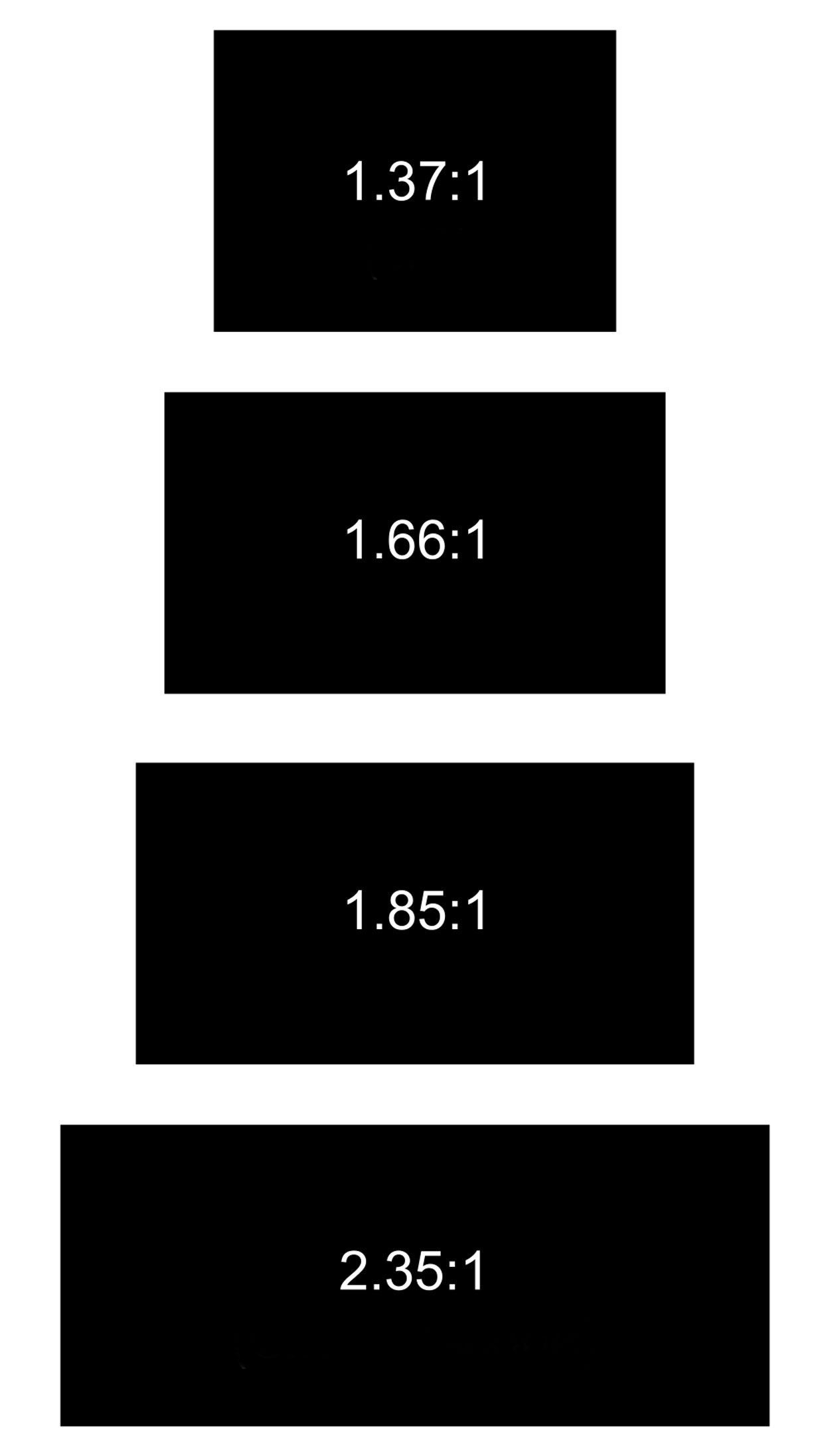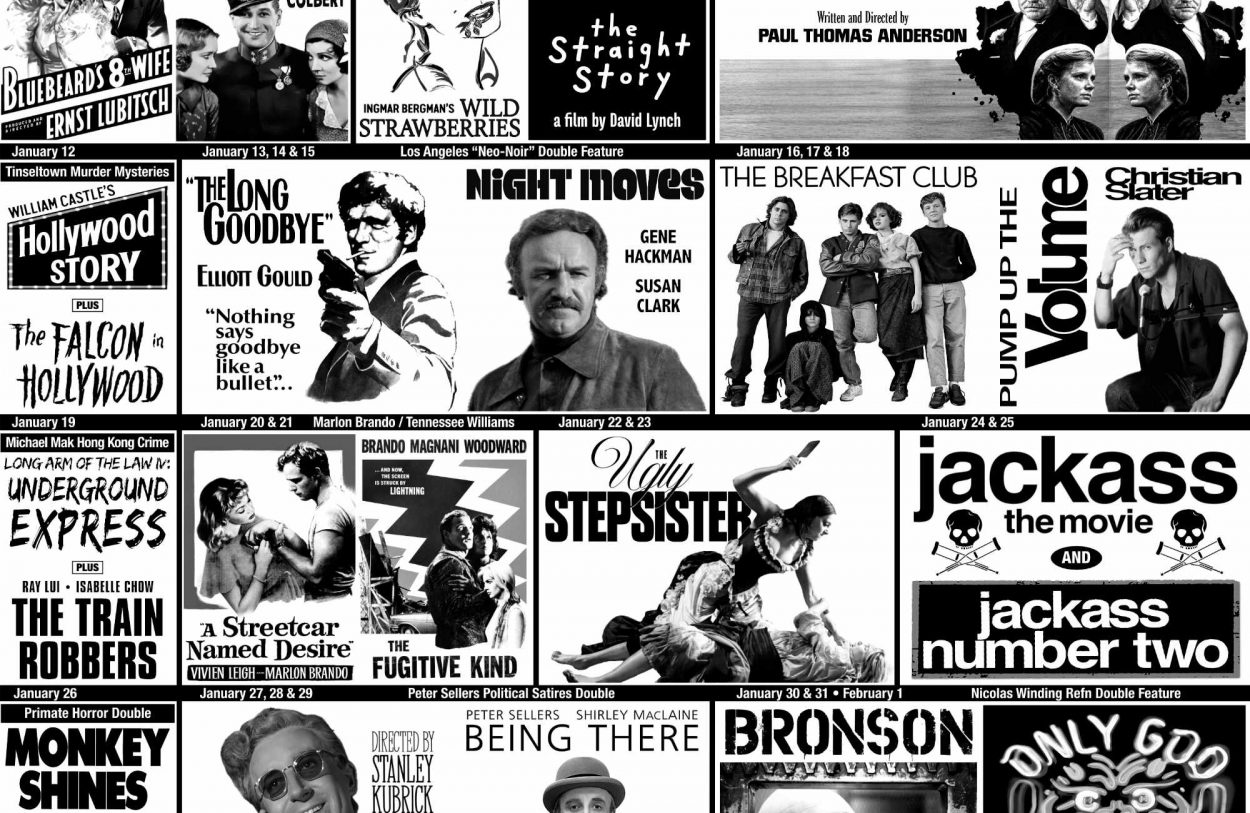Any film buff worth their weight in celluloid likely knows all about the historical sea change that occurred in 1953. That was the year The Robe was released in theaters. The Robe, for those who may not know, is a Biblical epic – very in vogue at the time – about the Roman tribune who commanded the unit that was assigned to crucify Jesus Christ. It was directed by Henry Koster, a rarely-discussed director who also helmed Harvey, Flower Drum Song, and My Man Godfrey as well as dozens and dozens of others. The Robe starred Richard Burton and Jean Simmons, and Caligula is one of the characters. It was nominated for five Academy Awards, winning two.
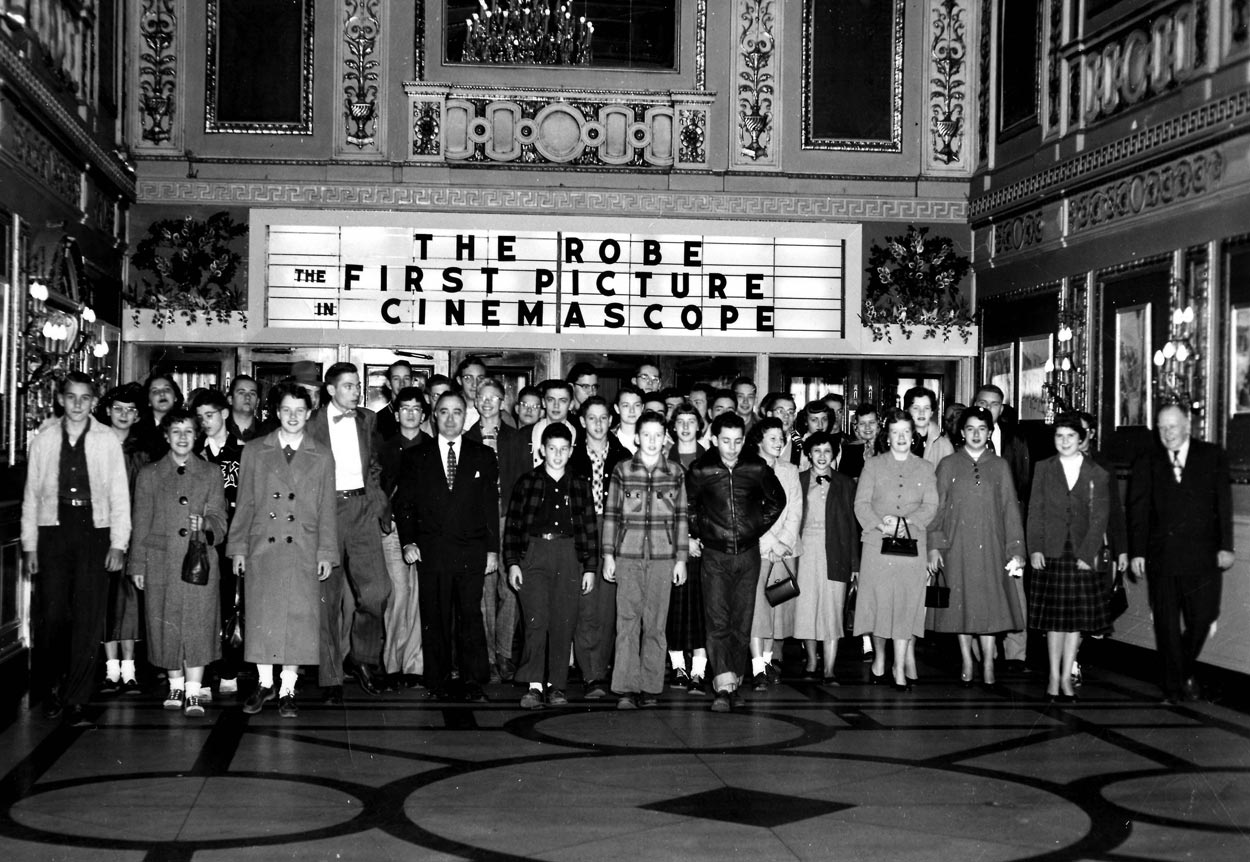
None of that trivia matters, however. The one notable piece of information most immediately recalled about The Robe is that it was the first major Hollywood release to be filmed in a 2.55:1 aspect ratio, sold at the time under the more marketable name of CinemaScope. CinemaScope, to offer a brief primer, was a series of lenses developed in 1953 that essentially “squashed” and “stretched” a film image in the camera so that a filmmaker could capture a longer, rectangular image. The CinemaScope name was only used until 1967, but many movies, to this day, film in an elongated aspect ratio. The most common size – the one you’ll see on your home videos – is 2.35:1, a shape that was standardized by the industry in 1957. And was rejiggered in 1970 to 2.39:1. Home videos and IMDb don’t really distinguish between the slightly different sizes.
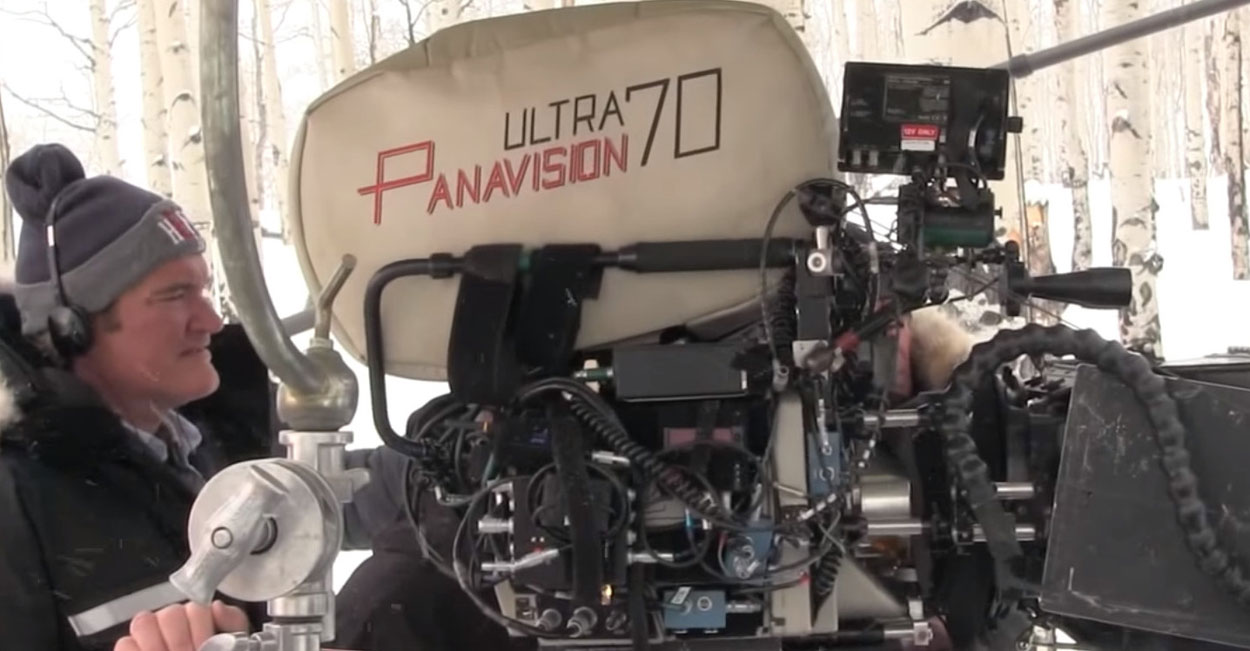
Around projection booths, all of the elongated aspect ratios are still referred to as “scope,” in a distant slang reference to CinemaScope. Although we at the New Beverly have to slightly adjust the masking around the screen and the subtle tilt of the projector to fit certain films, all of the elongated films use the same lens. Mr. Tarantino’s own The Hateful Eight was famously shot on Ultra Panavision 70 (which uses a 70mm film stock) last used on 1966’s Khartoum, and has a 2.76:1 aspect ratio. We still use the scope lens for that.
Working in a projection booth requires a lot of diligence when it comes to sussing out aspect ratios. After examining enough prints, taken openly from any point throughout film history, a skilled projectionist can train their eye to see if a film is 1.37:1, 1.66:1, 1.85:1, or scope. In the NewBev booth, we only have the four lenses commonly used for our 35mm projectors, so all our films are going to be projected in one of those four shapes. We also have a fifth lens – a 1.33:1 – but that one is reserved for silent movies and is only cracked out for special occasions.
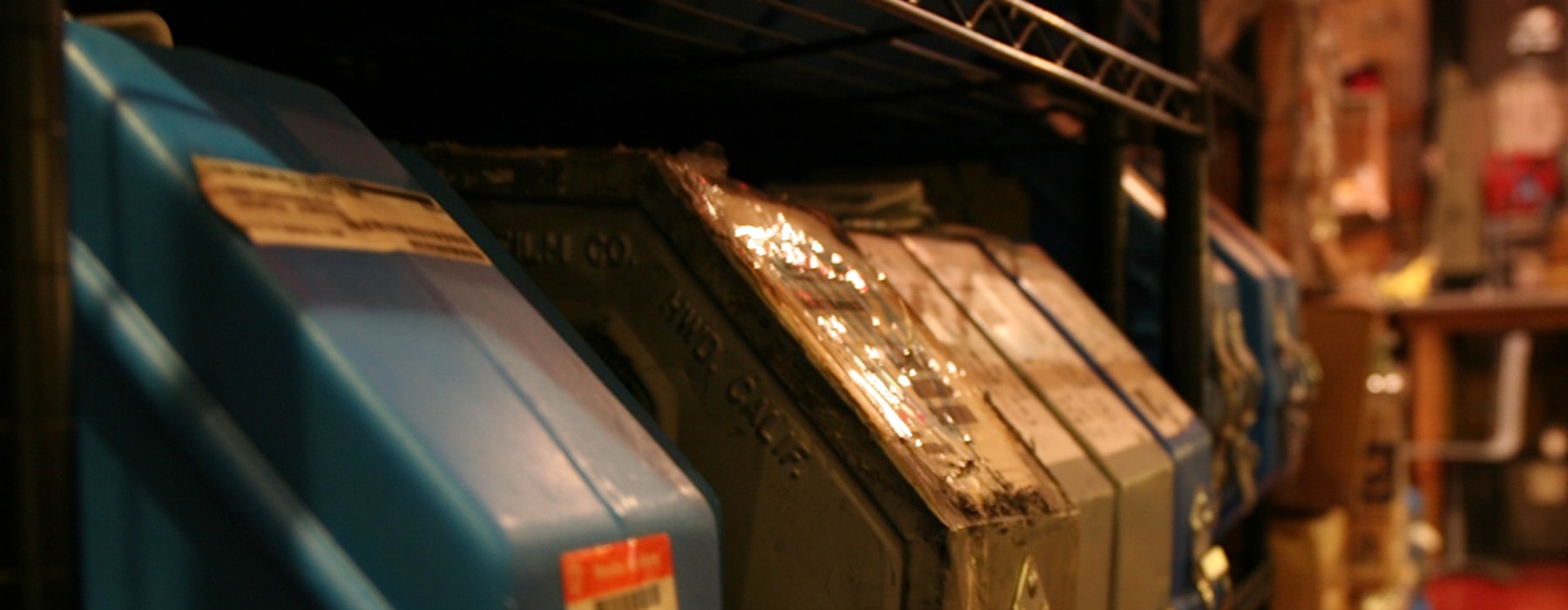
The problems arise when directors get involved. In 1953, you see, The Robe began pushing Hollywood away from the more traditionally square screens to the rectangular ones, and many were eager – or merely forced – to get on the bandwagon. As such, when we find ourselves examining a print from 1954, we have to be on our toes. Films were still being shot in the traditional 1.37:1 aspect ratio, and would arrive on the film negative in the old-fashioned near-square. It wasn’t going to be until the film was projected with a new lens and a specific matte that the proper shape would be seen by audiences. As such, we’re looking at a film from the 1950s that may be in the old aspect ratio, or may be in the new one.
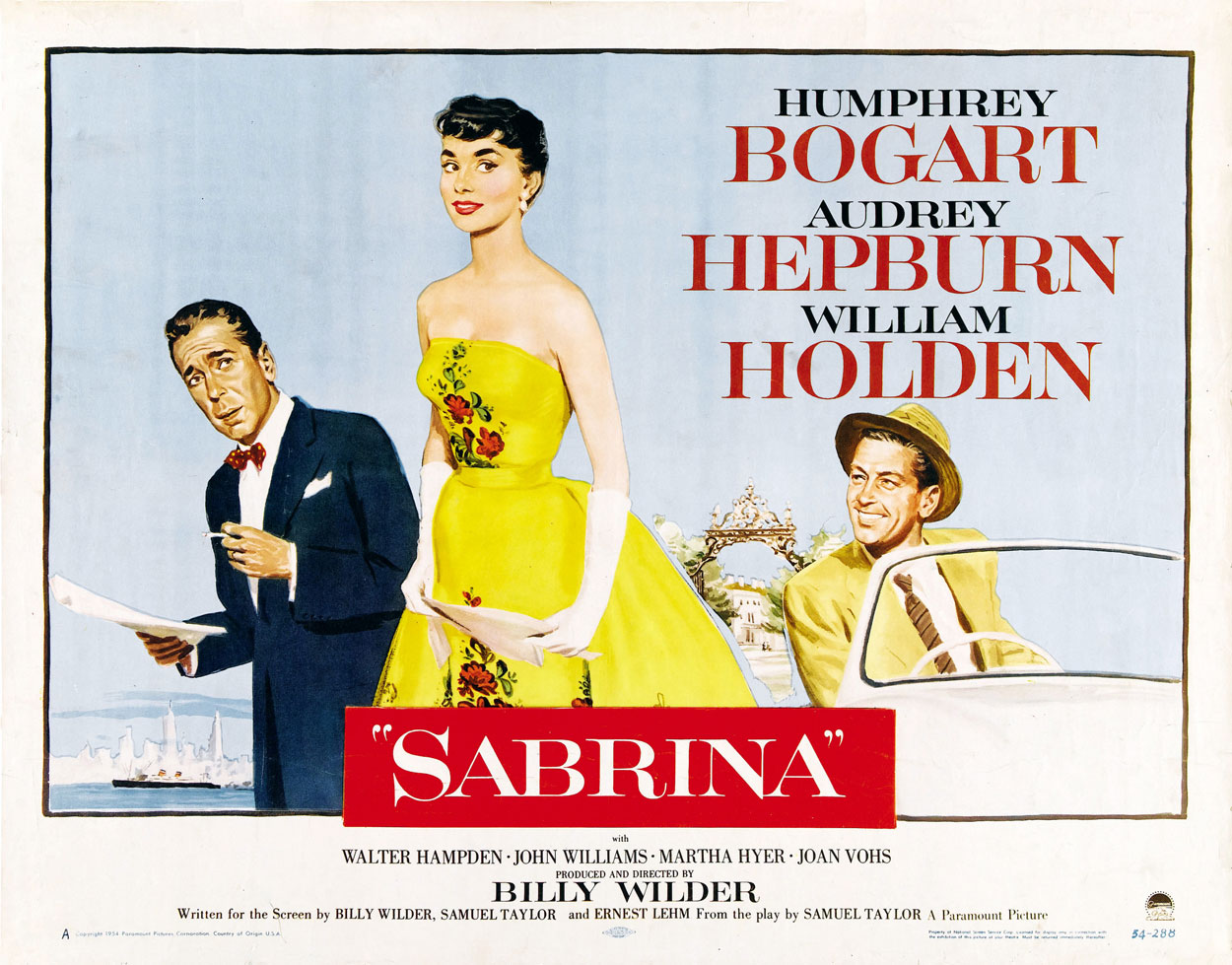
Case in point: The NewBev recently started looking at Billy Wilder’s classic 1954 romantic comedy Sabrina. If you’ve ever seen the film on TCM, watched it on VHS or even DVD, you’ll have seen the open-matte, 1.37:1. Some research, however, reveals this to be incorrect.
While the film still looks fine in 1.37:1 (there are no drooping boom mics, tape marks on the floor, or other off-screen shenanigans), a few minutes of research reveals that Wilder – or the studio – decreed that the film was to be presented in a then-experimental aspect ratio of 1.75:1. As projectionists, we have to make the tough call of cutting off the top and bottom of the image with a 1.85:1 lens, or less of the top and bottom with a 1.66:1 lens. Or just continuing the tradition of incorrectness with a 1.37:1. Which, of course, makes purists wince.
While the film still looks fine in 1.37:1 (there are no drooping boom mics, tape marks on the floor, or other off-screen shenanigans), a few minutes of research reveals that Wilder – or the studio – decreed that the film was to be presented in a then-experimental aspect ratio of 1.75:1. As projectionists, we have to make the tough call of cutting off the top and bottom of the image with a 1.85:1 lens, or the left and right with a 1.66:1 lens. Or just continuing the tradition of incorrectness with a 1.37:1. Which, of course, makes purists wince.
When bogging around 1954, one finds other films with a similar level of ambiguity, and indeed, there are some films that either don’t have a decreed aspect ratio, or – and this is maddening for a projectionist – a shifting aspect ratio. Elia Kazan’s On the Waterfront, for instance, was, like Sabrina, shot open matte, but with another aspect ratio in mind. The actual intended shape, however, has been lost in a 60-year-old sea of unknowable red tape. As such, if you were to pick up the superb Criterion Blu-ray of On the Waterfront, you’ll find that it has the film available in two separate aspect ratios. You get to choose which you like better.
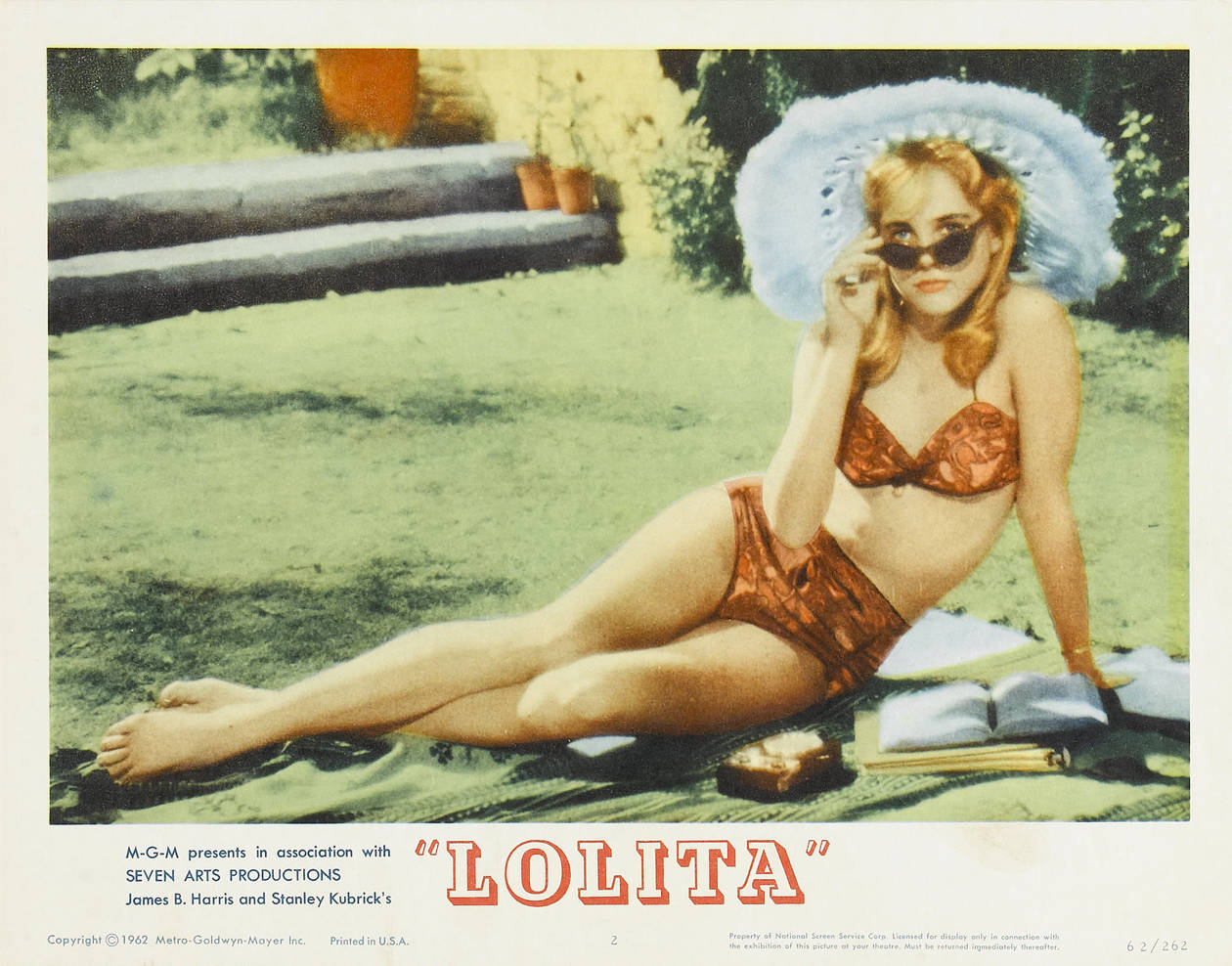
Stanley Kubrick was a bugaboo when it came to aspect ratios as well. Kubrick spent a lot of time in England, where the standard for a long time was 1.66:1, but who was still occasionally shooting films in 1.37:1. There has only been one director-approved home video version of Kubrick’s notorious Lolita (the Criterion LaserDisc), and that edition actually shifts aspect ratios throughout. Some scenes are full-frame, and some are going to be matted within the frame. This is also true of Dr. Strangelove. Some of the film is in 1.37:1, and some of it is in 1.66:1. It’s unclear if Kubrick was making some sort of oblique aesthetic decision, or of he simply wasn’t paying attention. Given Kubrick’s well-documented perfectionism, it’s likely the former. But, Stanley, why?
Barry Lyndon was the victim of misinformation, including – rather embarrassingly – my own. For many years, I had heard a story about how people assumed that the film was meant to be seen in 1.66.1, which had been confirmed by one of the actors in the film, one Leon Vitali. On his word, Warner Bros. released a home video version of Barry Lyndon in 1.66:1. According to my dubious sources, it wasn’t until years later that it was discovered that Vitali was simply incorrect in his assertion, and that Barry Lyndon was meant to be seen in 1.75:1. Not a huge difference, but a difference nonetheless.
It was recently brought to my attention, however, that Kubrick actually drafted a memo to projectionists explaining that Lyndon was meant to be in 1.66 after all (“And in no event, less than 1-1:75,” he added). I was, it turns out, fooled by the fluctuating information.
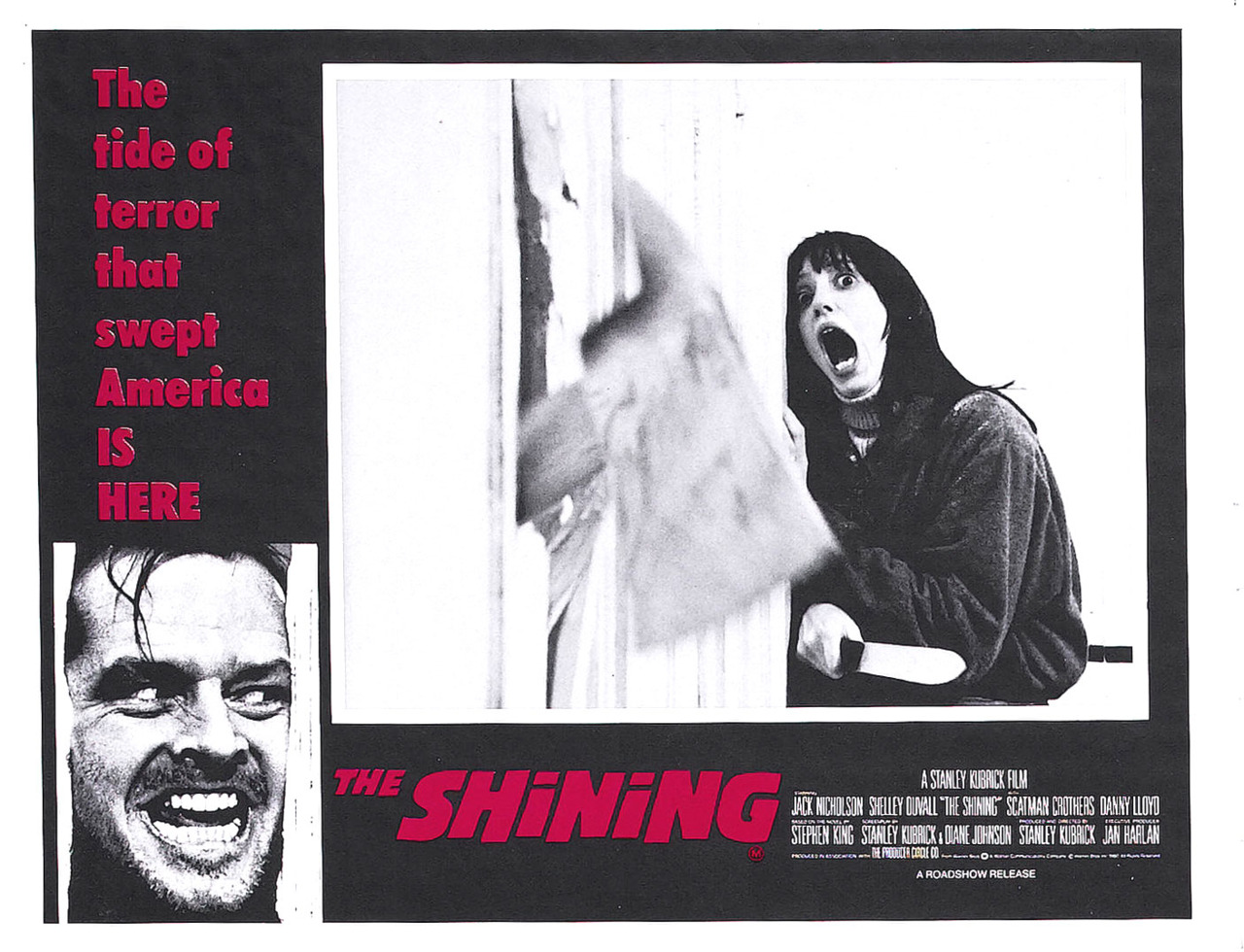
The Shining is a particularly sticky case. I have personally seen The Shining in theaters four or five times… and in three different aspect ratios. Kubrick shot The Shining open matte, and seems to have wanted it to be released in 1.85:1 in America, and in 1.66:1 in Europe. He shot in one aspect ratio for adaptation to two others, depending on where you are. This is either maddening, or freeing.
Looking at The Shining, it’s hard to tell what Kubrick ultimately wanted. There seems to be some controversy over his dying wishes, which actually dictated The Shining be shown in 1.37. But you may notice that an open-matte presentation includes a helicopter shadow in the opening sequence, and allows for a good deal of “head room” above the actors’ heads in many scenes. It looks… just wrong somehow. But then, in other scenes – notably the long floating shots down extensive hallways, and the famous shot of the Grady twins in particular – the squarer aspect ratio simply looks better.
There have been no surfaced notes on any of these films or their shifting aspect ratios, but we may be able to assume that Kubrick wanted both. Although indispensable on the big screen, Kubrick’s films are the most accurately presented on home video where the aspect ratio can shift freely.
This shifting still happens from time to time, although more openly than before. Some of today’s modern action blockbusters are partially filmed in IMAX, and partially on smaller cameras, making for a shifting aspect ratio. The most recent notorious example of this may be Christopher Nolan’s The Dark Knight Rises. The Blu-rays of that film have very clearly shifting mattes.
These days, there are usually only two standards (2.39:1 and 1.85:1), but at the NewBev, we experience all of film history at once, so these are immediate concerns for us. We endeavor to do what’s correct, but, well, Stanley Kubrick messes with our heads.
